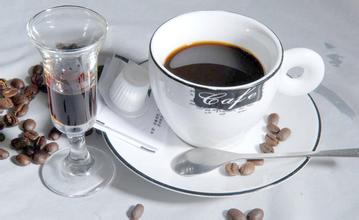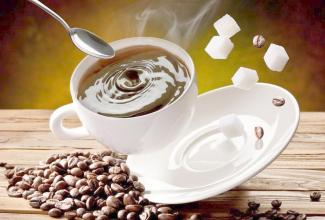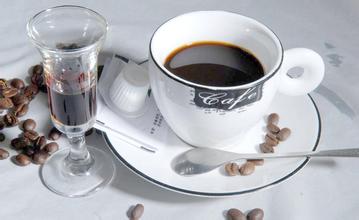Introduction to Columbiana Linglong Coffee Flavor description method
Colombia coffee varieties are mainly small coffee. Plants are small trees or large shrubs, 5-8 meters high, usually multi-branched at the base; old branches are gray, nodes expand, young branches glabrous, compressed. Leaves thinly leathery, ovate-lanceolate or lanceolate, 6-14 cm long, 3.5-5 cm wide, apex long acuminate, acuminate 10-15 mm long, base cuneate or slightly obtuse, rarely rounded, entire or shallowly undulate, glabrous on both surfaces, with or without pits in axils of lower veins; midvein raised on both surfaces of leaf blade, lateral veins 7-13 on each side; petiole 8-15 mm long; Stipules broadly triangular, born at the top of the young branches conical long pointed or awned tip, born at the top of the old branches are often pointed, long 3-6 mm. Cymes several clustered in leaf axils, each inflorescence 2-5 flowers, without pedicel or with very short pedicel; flowers aromatic, pedicels 0.5-1 mm long; bracts more or less united at base, dimorphic, 2 broadly triangular, nearly equal in length and width, 2 lanceolate, 2 times as wide, foliaceous; calyx tubular, 2.5-3 mm long, calyx limb truncated or 5 denticulate; Corolla white, length varies with species, generally 10-18 mm long, apically often 5-lobed, rarely 4-or 6-lobed, lobes often longer than corolla tube, apically often obtuse; anthers protruding outside corolla tube, 6-8 mm long; styles 12-14 mm long, stigmas 2-lobed, 3-4 mm long. Berry broadly elliptic when ripe, red, 12-16 mm long, 10-12 mm in diam., exocarp dural, mesocarp fleshy, sweet; seeds raised abaxially, ventral plane, longitudinally grooved, 8-10 mm long, 5-7 mm in diam. Flowering March-April
Colombia's favourable climate provides coffee with a true "natural pasture". Coffee trees in Colombia are mainly cultivated in the Andes mountains, on steep slopes up to 1,300 meters above sea level, where the annual temperature is about 18 degrees Celsius, the annual rainfall is 2000 to 3000 mm, the north latitude is 1 °-11 ° 15, the west longitude is 72 ° -78 °, and the specific altitude range can exceed 2.000 meters. By a particular combination of various factors, latitude, altitude, soil, plant origin of species and variety of coffee making in coffee growing areas of Colombia, climate in coffee growing areas and rain patterns resulting from dual paths of tropical convergence, changing topography throughout the day, luminosity, favorable temperature ranges throughout the year, distribution of moderate and rainwater, and some common cultural practices including selective harvesting and transformation processes, including washing and drying. Very suitable for coffee growth, mild climate, humid air, and can be harvested regardless of season. That's why Colombia coffee is so good. Colombia has three Cordillera mountains running north-south, right into the Andes. Coffee is grown along the highlands of these mountains. The terraces provide a diverse climate, with harvest seasons throughout the year and different types of coffee maturing at different times. And fortunately, unlike Brazil, Colombia doesn't have to worry about frost damage. There are approximately 2.7 billion recorded coffee trees in Colombia, 66 per cent of which are grown on modern plantations and the rest on small traditionally managed farms.
Coffee workers pick coffee beans (also known as coffee cherries) by hand up the mountain, so they can carefully select and pick the most ripe and plump fruits. Most Colombia coffee beans are washed, and after medium roasting, they have a light silky taste and sometimes a little sour taste. They are not as strong as Brazilian coffee and Italian Expresso. They are known as "green gold".

Important Notice :
前街咖啡 FrontStreet Coffee has moved to new addredd:
FrontStreet Coffee Address: 315,Donghua East Road,GuangZhou
Tel:020 38364473
- Prev

Introduction to the characteristics of El Salvador Himalayan Coffee Grinding method and Variety producing areas
In the early 1990s, guerrilla warfare greatly damaged the country's national economy, reducing coffee production from 3.5 million bags in the early 1970s to 2.5 million bags in 1990-1991. The eastern part of the country was most affected by guerrilla warfare, and many farmers and workers were forced to leave the manor. The shortage of funds has led to a sharp drop in coffee production, from 1200 kg per hectare in the past to today's yield per hectare
- Next

Description of Flavor of Yunnan small-grain Coffee Huaguoshan Coffee; introduction to the taste of varieties in producing areas
After the victory of the Anti-Japanese War, the local party organization of the Communist Party of China in Yunnan comprehensively carried out the struggle to seize political power by organizing and mobilizing the people, and formed the column of the Guangxi-Yunnan-Guizhou Border region of the Chinese people's Liberation Army. In 1949, under the unified leadership of the Party, 61 counties were liberated and 14 base areas were established. On December 9, 1949, Lu Han led his army to revolt in Kunming, and Yunnan proclaimed the peaceful liberation of the May 4th Movement in 1919.
Related
- Detailed explanation of Jadeite planting Land in Panamanian Jadeite Manor introduction to the grading system of Jadeite competitive bidding, Red bid, Green bid and Rose Summer
- Story of Coffee planting in Brenka region of Costa Rica Stonehenge Manor anaerobic heavy honey treatment of flavor mouth
- What's on the barrel of Blue Mountain Coffee beans?
- Can American coffee also pull flowers? How to use hot American style to pull out a good-looking pattern?
- Can you make a cold extract with coffee beans? What is the right proportion for cold-extracted coffee formula?
- Indonesian PWN Gold Mandrine Coffee Origin Features Flavor How to Chong? Mandolin coffee is American.
- A brief introduction to the flavor characteristics of Brazilian yellow bourbon coffee beans
- What is the effect of different water quality on the flavor of cold-extracted coffee? What kind of water is best for brewing coffee?
- Why do you think of Rose Summer whenever you mention Panamanian coffee?
- Introduction to the characteristics of authentic blue mountain coffee bean producing areas? What is the CIB Coffee Authority in Jamaica?

